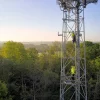BDUK Tweak Gigabit Broadband Voucher Rules Around Eligibility

The Government’s Building Digital UK team has tweaked the eligibility rules for rural gigabit vouchers in order to balance against the issues caused when parts of the UK are placed under a Public Review as part of the £5bn Project Gigabit programme, which can cause in-scope premises to suddenly become ineligible for vouchers.
The Government are currently conducting a number of Public Reviews across parts of the UK (e.g. the Dorset example), which essentially seeks to confirm which premises are planned (or can already) benefit from gigabit-capable broadband coverage as a result of commercial builds. In short, this helps to identify the poorly served rural areas that may be eligible for public subsidy – either via gigabit vouchers or a larger deployment contract.
However, the terms of the £210m UK Gigabit Voucher scheme (part of Project Gigabit), which offers up to £3,500 for businesses and £1,500 for homes to help them get a gigabit-capable connection installed, state that when an area goes into Public Review premises in-scope become ineligible for vouchers.
Advertisement
The rule makes sense as the Government doesn’t want to invest public money where it isn’t needed, but at the same time this does tend to create problems for voucher projects, such as those that may already be in-progress (e.g. increased risk of some vouchers being rejected or suffering from delayed approval). But a new update from BDUK, which has been seen by ISPreview.co.uk, suggests that they’ve recognised this concern and made a change.
Update on Gigabit Voucher Terms (BDUK)
In order to balance the need to provide stable intervention areas for Project Gigabit procurements with safeguarding voucher projects in advanced development, suppliers will now be able to request vouchers up to six weeks before procurement formally starts.
To provide time for suppliers and communities to apply to the scheme, Building Digital UK will provide at least three month’s notice of future Public Reviews and procurement start dates.
For areas due to start procurement before October, there is a slightly different approach but one that still gives a minimum three-months’ notice. For these areas outlined below, the facility to request vouchers will no longer be available from 5pm on Friday 24th September 2021.
— Cambridgeshire
— Cumbria
— Dorset ^
— Durham
— Essex ^
— Northumberland^ For Essex and Dorset only: The window will close after this date for the areas of Essex and Dorset that will be going into procurement for a Local Supplier contract. For the remaining areas of these counties the situation will revert back to normal until any subsequent procurement activity begins.
Suppliers should factor BDUK’s project review process into their planning, ensuring that projects are submitted with complete applications, including all relevant and correct information. There is no guarantee a project will be published in time to request vouchers. Suppliers are encouraged to submit their projects as soon as they can.
Admittedly, Public Reviews aren’t the only area causing some disruption for the voucher scheme. Despite being a positive development, Openreach’s recent decision (here) to extend their rural FTTP rollout to reach 6.2 million UK premises by December 2026 has also disrupted a number of voucher projects (i.e. those that might have delivered a similar service, albeit much sooner, in the same areas). Some ISPs thus feel as if their commitment and effort has been undermined.
On top of that, we continue to hear occasional reports from ISPs that have been left waiting months for their voucher projects to receive approval (it should normally be a lot quicker), although the feedback has been sporadic and so it’s currently hard to tell whether these are isolated cases at specific operators or signs of a wider problem. As one provider told us, “they’re still trying to cope with the avalanche of projects submitted back in February, at the closing of the old scheme” (here).
A DCMS Spokesperson said:
“This is not about any backlog from the previous scheme and no premises in need will miss out on getting connected through either a voucher or Project Gigabit contract.
Previously, voucher requests in areas going through public review were paused so that the premises to be connected through contracts could be identified.
In recognition of Project Gigabit’s fast pace, we are allowing voucher requests to be submitted during public review and up to six weeks before procurement begins as well as giving three months’ notice when an area is entering public review.”
On the other hand, this sort of disruption was perhaps inevitable. The new voucher scheme inhabits much the same space and focus as the gap funded side of Project Gigabit. Between that, the new commercial builds and recent rule changes (e.g. restricting the focus to Area 3), it can be difficult for smaller ISPs to find the necessary stability to secure their voucher plans.
Advertisement
Mark is a professional technology writer, IT consultant and computer engineer from Dorset (England), he also founded ISPreview in 1999 and enjoys analysing the latest telecoms and broadband developments. Find me on X (Twitter), Mastodon, Facebook, BlueSky, Threads.net and Linkedin.
« Three UK Boost 4G and 5G Mobile Data on Pay As You Go Packs
New ISP No One Joins CityFibre’s UK FTTP Broadband Network »





















































Reading this, I can assume that if a company applies for the fund, they get £1500 per deployed and connected property, so assuming this is correct there is plenty money to pick up here. Can I assume that is the reason we seeing so many companies deploying FTTP?
Now of course the cost of deployment is large when you have to dig up the road etc, but if they use the ducting in place (Government have changed some rules i been told recently) the deployment / meter is relative low and they make a good profit?
Depends if there is any ducting in place .most infrastructure companies payback is based on somewhere between 15 nd 20 year or even more
No, the customer gets that money off of their bill for installation. The company doing the work doesn’t make any more or less money, it’s just that a proportion of the bill is paid by someone else instead of all being paid by the customer.
In a lot of cases, £1500 isn’t enough to cover that cost fully.
The Openreach rural engagement manager dealing with our CFP has advised me that they have not had any voucher approvals come through from BDUK for a number of months. I believe the backlog includes applications submitted in February under the previous scheme.
The backlog is in part as under the UKGV voucher scheme launched in April 2021, only Area 3 properties were eligible (~9M in total) but Openreach were committing to cover ~3M of these commercially, so vouchers would only be available to ~6M less any properties currently in scope via a BDUK build.
Once Openreach increased their commercial Area 3 Build to ~6m properties, less any BDUK build that doesn’t overlap, there are not many areas that fall eligible for vouchers, and even fewer communities where vouchers could fund new build activity.
This effects Openreach CFP’s as much as any other Altnet build.
Realistically vouchers sole purpose now and over the next 5 years is to cluster small pockets of 2-5 properties as a project connecting to the nearest infrastructure.
Jim –
Yes, but Openreach are not committing to build to all 6m premises and will likely drop at least 20% of premises within each exchange area. This 20% will likely be made up of the same NGA white premises not currently served by FTTC, who will then have to wait several more years for a BDUK direct procurement covering their area.
As I believe the vast majority of NGA white premises will require some form of government subsidy in the end, hopefully BDUK will be able to work within state aid regulation to continue to offer vouchers to NGA white premises who do not form part of a finalised build plan. Otherwise the digital divide will continue to grow exponentially over the next 5 years.
@Peter
That’s exactly what Openreach have committed to – 6M in area 3.
What they are not committed to is connecting every property in an exchange boundary they announce.
Unfortunately that will leave tiny pockets surrounded by FTTP, which Openreach will want to them bid for under future intervention.
@Jim
I hope you are right about the additional 3m premises being an Openreach commitment, as their website refers to it as an “extended build ambition”. If 3m premises are going to be locked out of voucher support for up to 5 years you would hope that BDUK would be asking for a firm commitment.
@Jim Are PRPs submitted prior to April (February / March) that haven’t been approved yet impacted? Have you had first hand experience of this? Our community group says they are not but this doesn’t match what you are saying.
@John – PRP / Projects have 2 checks 1) at the time of approval for that Project if the properties are eligible, 2) when individual properties vouchers are applied for and issued.
If eligibility changes between 1) & 2) then no voucher!
Yes, we have several PRP transferred to projects where exactly this happens – 1 neighbour gets a voucher, next door doesn’t as they applied later.
Does Openreach Area3 commitment affect eligibility for PRPs still held up from March, it has too as every postcode is checked and suppliers have the opportunity to omit any ineligible from the Project to reach project approval, but individual properties could still be ineligible when they come to apply for their specific voucher.
Is there an easier to understand document or website that explains these grants? The government voucher website says my area is blue so the the application period is closed apparently. BT said last year that my town is in scope of a FTTP project but apparently that doesn’t extend to my property at the outskirts of the town. I’m less than 400m to the green cabinet but BT engineers have told me previously that my line actually goes past my house underground, surfaces then gets fed back to my house by pole, so I can’t get full speeds out of FTTC. I think this is the reason I’m no longer in scope (not as easy to feed fibre to poles?)
I’d like to enquire about the FTTP grants but I don’t get it. We have a consumer FTTC product, but my wife also runs a business from the house so I guess we also tick the box of a business grant?